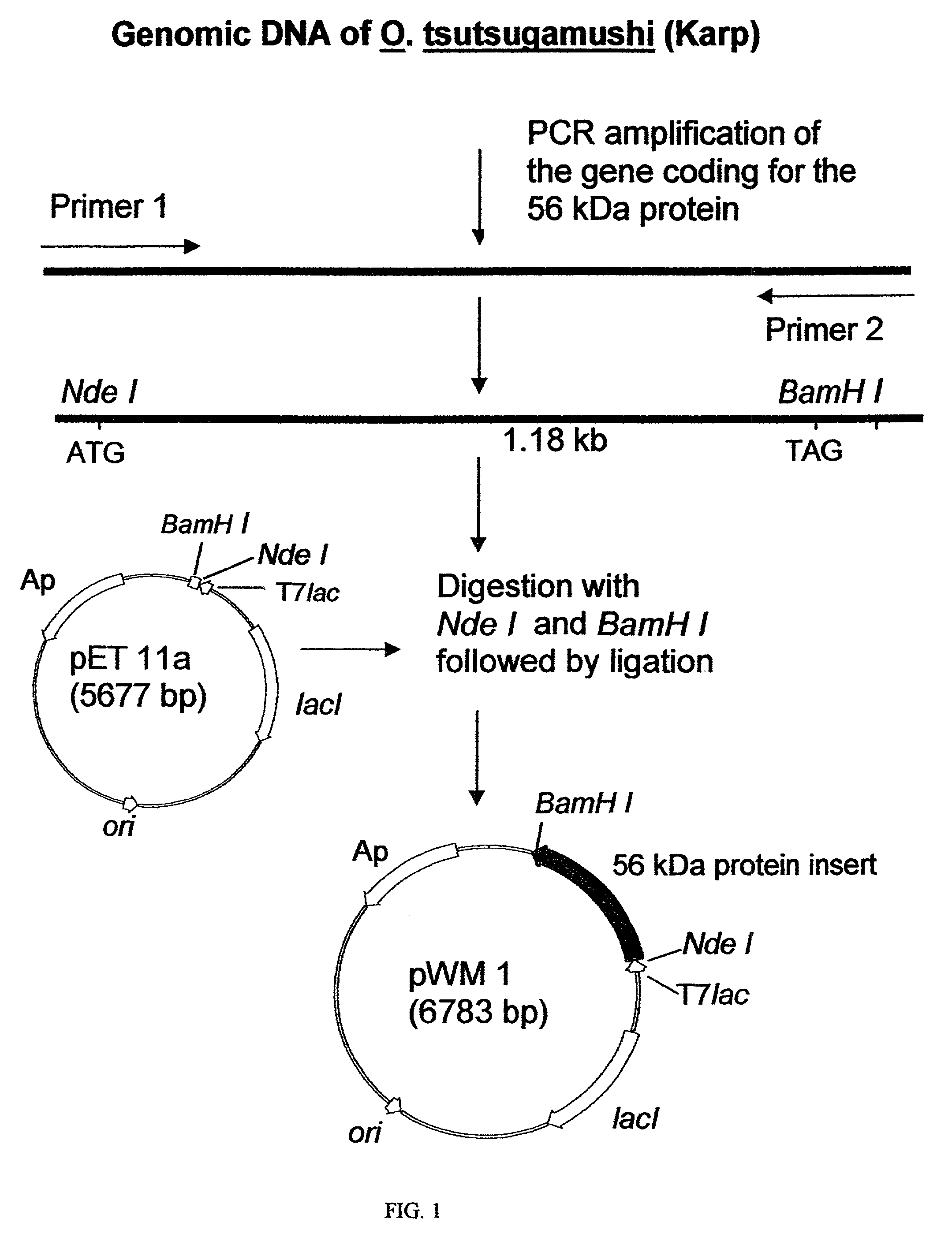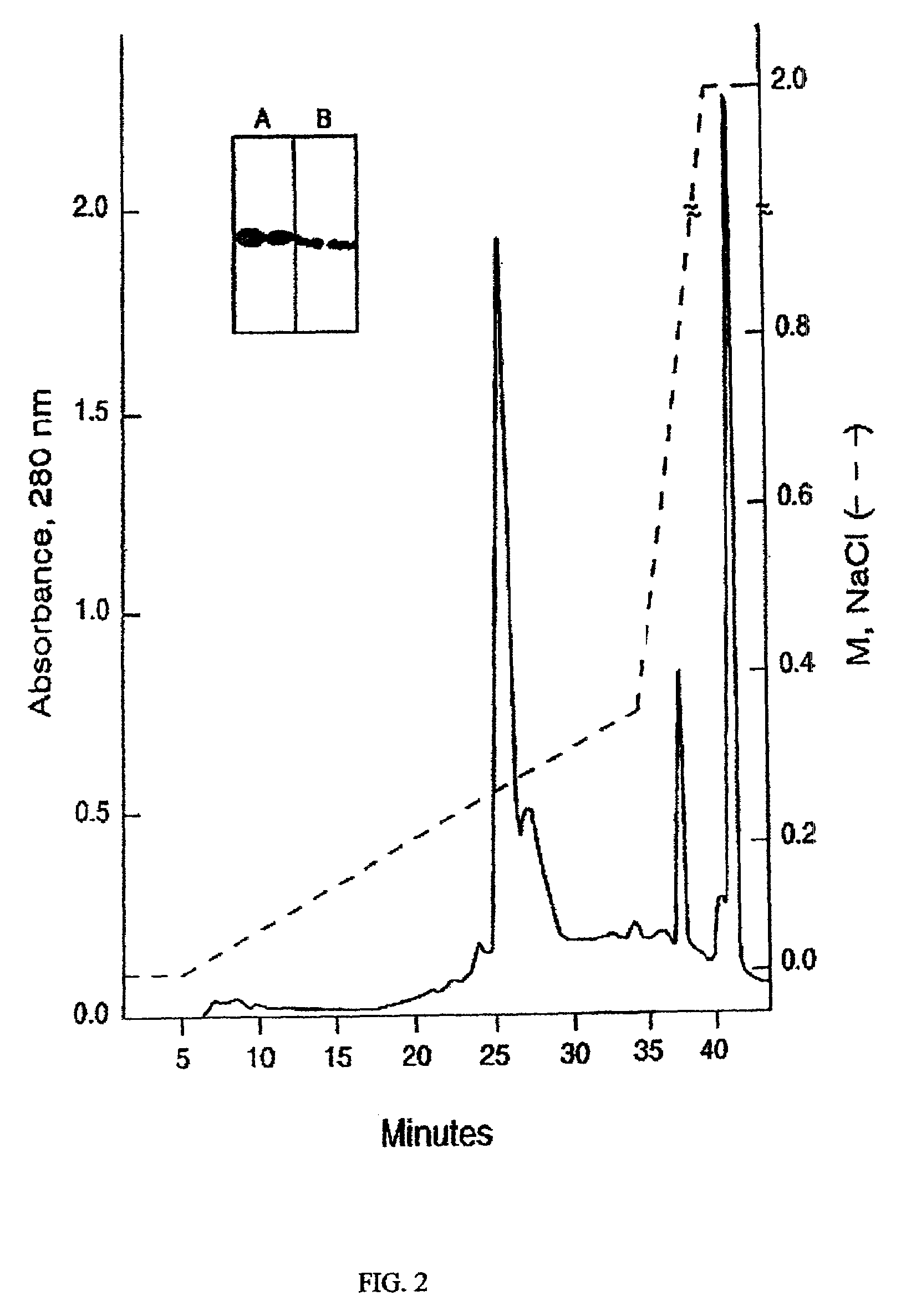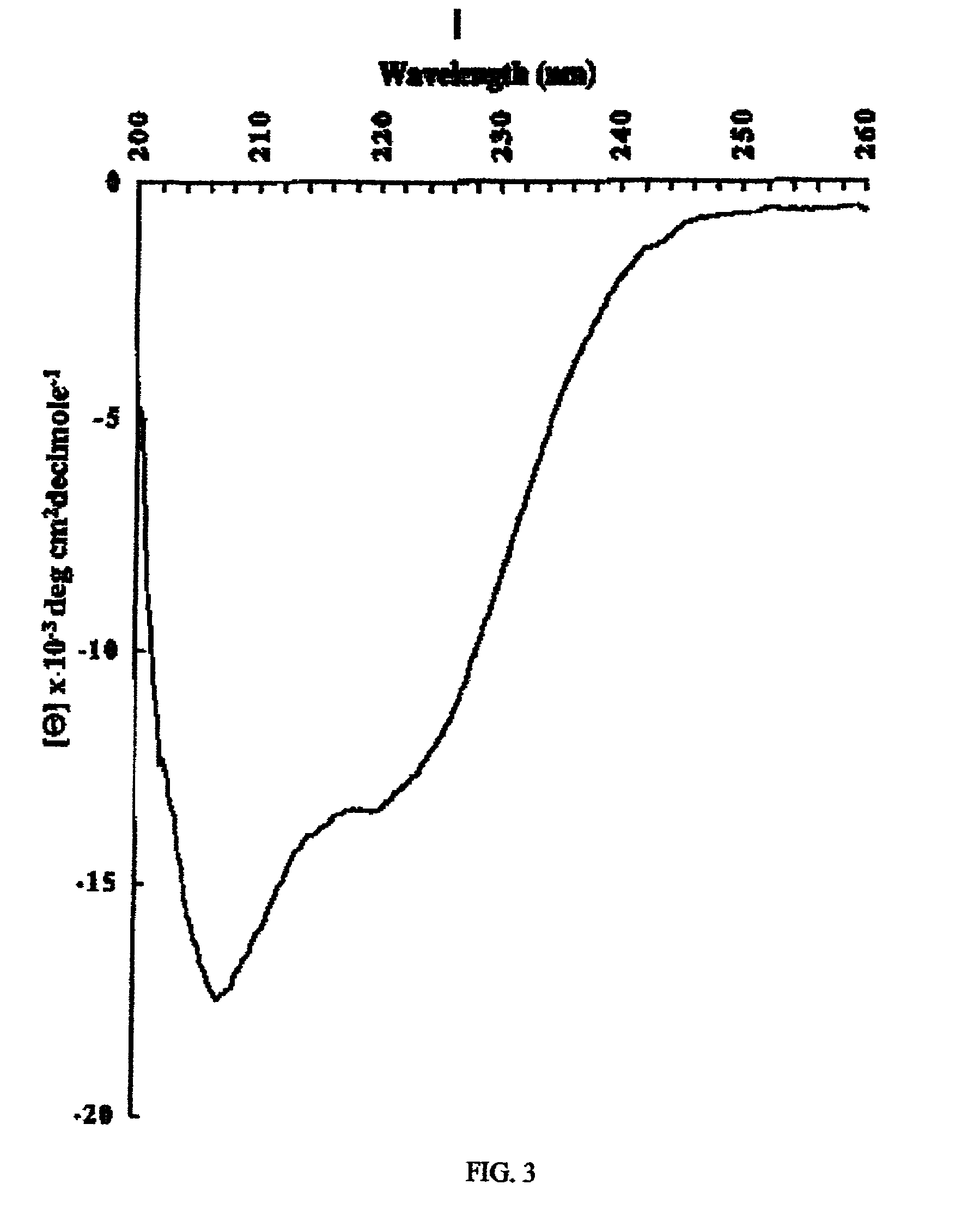Truncated recombinant major outer membrane protein antigen (r56) of Orientia tsutsugamushi strains Karp, Kato and Gilliam and its use in antibody based detection assays and vaccines
a technology of major outer membrane protein and orientia tsutsugamushi, which is applied in the field of truncated recombinant major outer membrane protein antigen (r56) of orientia tsutsugamushi, can solve the problems of high cost of large-scale growth and purification of scrub typhus, difficult differentiation of scrub typhus from other acute tropical febrile illnesses such as leptospirosis, murin
- Summary
- Abstract
- Description
- Claims
- Application Information
AI Technical Summary
Benefits of technology
Problems solved by technology
Method used
Image
Examples
example 1
Cloning and Expression of Recombinant 56 kDa Gene.
[0035]As shown in FIG. 1, a primer pair (56F(226 / 261), 5′-TTGGCTGCACATATGACAATCGCTCCAGGAT TTAGA-3′ (Seq. ID No. 2) and 56R(1409 / 1363), 5′-CTTTCTAGAAGTATAAGCTAACCCGGATCC AACACCAGCCTATATTGA-3′ (Seq. ID No. 3) was designed using the nucleotide sequence of the open reading frame for the Karp 56 kDa protein (34). The respective restriction sites for Nde I and BamH I are underlined and the new initiation codon and reverse complement of the new stop codon are shown in bold and italic, respectively. The forward primer 56F(226 / 261) contained the methionine initiation codon, at residue 80, which is part of the Nde I recognition sequence. The reverse primer 56R(1409 / 1363) created an alteration of the tyrosine codon at residue 457 to a stop codon and contained a BamH I site. The coding sequence from amino acid 80 to 456 was amplified by polymerase chain reaction (PCR), using the above primers, from DNA isolated from plaque-purified O. tsutsugamu...
example 2
Use of r56 Polypeptide in Antibody Based Identification Assays.
ELISA Assay Method
[0043]The microtiter plates are coated with antigens diluted in PBS overnight at 4° C. and blocked with 0.5% boiled casein for 1 hr, rinsed with PBS twice, 5 min each time. Patient sera are diluted 1:400 with 20 μg / ml of control protein extracts purified from E. coli BL21 using a procedure identical to that used for purifying r56 (fractions 21-32 pooled from gradients equivalent to FIG. 2), pre-absorbed for about 1 hr at room temperature, and then added to the ELISA plates. The plates are incubated for 1 hr at room temperature, washed four times with 0.1% Triton X-100 in PBS. Peroxidase conjugated mouse anti-human IgG (Fc specific) (Accurate) diluted 1:8000 and goat anti human IgM (μ chain specific) (Kirkegaard & Perry) are then added. After 1 hr incubation at room temperature, the plates are washed four times with 0.1% Triton X-100 in PBS and the last wash is with PBS only before the addition of substr...
example 4
Induction of Protective Immune Response.
[0051]Because of the significant antibody response exhibited after exposure with O. tsutsugamushi in rabbits and humans, and the excellent recognition pattern of r56 polypeptide compared to whole cell extracts, the r56 polypeptide is a good candidate vaccine component.
[0052]Two strains of either relatively outbred mice (CD1) or an inbred strain (C3H) were immunized, with adjuvant with the r56 polypeptide. At various times after administration of the polypeptide the animals were challenged with live O. tsutsugamushi.
[0053]The protective efficacy of administration of r56 polypeptide is shown in table 4.
[0054]
TABLE 4Protection of Mice by Immunization with r56ChallengeStrain ofDose / Mousedate post%Experimentmice(adjuvant)immunizationProtectionIC3H25 μg3 weeks100% (incomp.Freunds)IICD125 μg4 months60%(Titer Max)IIICD12 μg4 weeks60%(Titer Max)
Karp, Kato and Gilliam Strains
[0055]The variable 56 kDa major outer membrane protein of Orientia tsutsugamus...
PUM
| Property | Measurement | Unit |
|---|---|---|
| pH | aaaaa | aaaaa |
| pH | aaaaa | aaaaa |
| pH | aaaaa | aaaaa |
Abstract
Description
Claims
Application Information
 Login to View More
Login to View More - R&D
- Intellectual Property
- Life Sciences
- Materials
- Tech Scout
- Unparalleled Data Quality
- Higher Quality Content
- 60% Fewer Hallucinations
Browse by: Latest US Patents, China's latest patents, Technical Efficacy Thesaurus, Application Domain, Technology Topic, Popular Technical Reports.
© 2025 PatSnap. All rights reserved.Legal|Privacy policy|Modern Slavery Act Transparency Statement|Sitemap|About US| Contact US: help@patsnap.com



